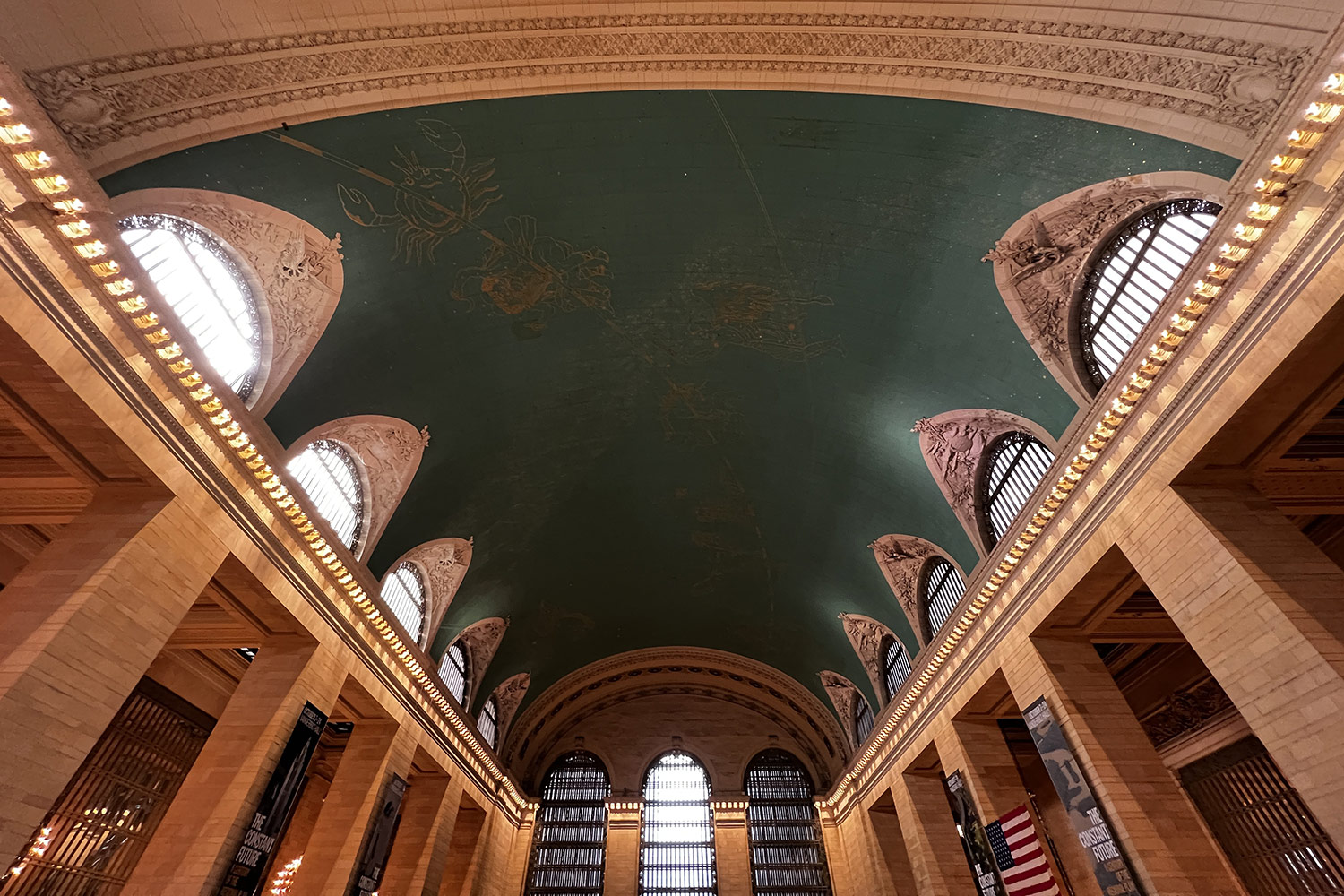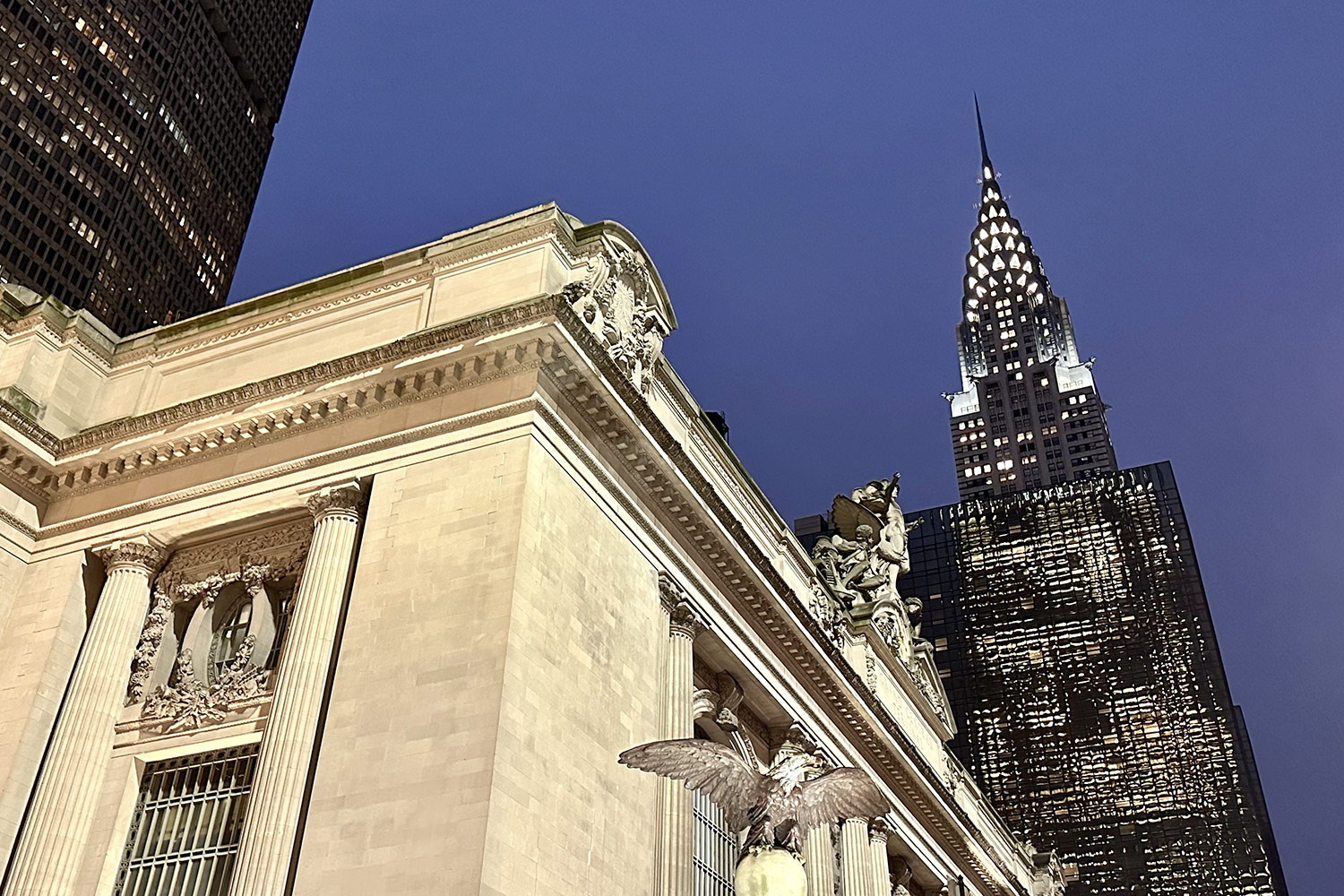Table of contents
You’ve probably seen it in movies and TV shows: Grand Central Terminal Station is an iconic place in New York City. More than just a train station, it has a history that is worth knowing, especially if you are planning a trip to New York.
Historic landmark in New York
In the early 1800s, New York City grew exponentially and quickly became the economic, financial and cultural capital of the country. Essential to the city’s development, freight and passenger lines flourished beginning in the 1830s. Under the impetus of the three railroad companies Harlem, New Haven and Hudson, Grand Central Depot opened in 1871, along 42nd Street and Vanderbilt Avenue. But rail traffic continued to grow and Grand Central Depot soon became too small, requiring a doubling of its size.
Between 1903 and 1913, the construction of a new building gave birth to Grand Central Terminal as we know it today. The architectural firms of Reed & Stem and Warren & Wetmore collaborated, not without difficulty, to realize this majestic construction.
With Tennessee marble floors, marble and stone sculptures (by Sylvain Salières), decorative flourishes, Botticino marble and imitation Caen stone wall coverings, the new New York station is a sumptuous and elegant gateway to the city.
Competition with airplanes, rising crime, declining long-distance rail travel and shrinking budgets diminished the station’s appeal. In the 1970s, Jacqueline Kennedy-Onassis and architect Philip Johnson founded a committee to preserve Grand Central Terminal and save it from a desired destruction.
Isn’t it cruel to let our city die little by little, stripped of all its proud monuments, until there is nothing left of all its history and beauty to inspire our children…? Jacqueline Kennedy Onassis 1975

Inside Grand Central Terminal
Monumental statues on the façade and clocks
From the Pershing Square viaduct, you can see the magnificent Tiffany clock over the central arch. Its diameter of over four meters makes it the largest Tiffany glass work in the world.
It is accompanied by three monumental statues representing Greek gods who symbolize the virtues of railroads: Mercury (speed), Minerva (intelligence) and Hercules (strength). This ensemble, called “Transports”, is 15 meters high and weighs about 1,500 tons.
Inside the building, in the main hall, you can’t miss the opal clock in the information kiosk. Accurate to 1 second, it is set for the next 20 billion years and has been valued at nearly $20 billion!
Note that the Pershing Square Viaduct is, during various holidays and celebrations, beautifully illuminated by multi-colored LED bulbs.
The vault of heaven in the main hall
When you enter the main lobby, it is the ceiling that quickly catches your eye. Painted by Paul-César Helleu in turquoise, it is covered with gold leaf and represents the 12 constellations. Of the 2,500 stars that make up this set, 59 are lit by LEDs. If you look closely at the vault, you can see that the zodiac is painted … Backwards! The explanation lies in the fact that it must be observed from the divine perspective and not from that of humans.
Another peculiarity that you can discover by looking at the ceiling, near the sign of cancer, one of the bricks appears darker than the others. In 1990, the restoration project included the cleaning of this sumptuous painting and this brick was kept as it was before. The dark color of this brick reveals the dirtiness of tar and nicotine residue and not, as one might imagine, soot and dust from the trains.
The Whispering Gallery, the Market and John W. Campbell
After feasting on one of the 30 varieties of oysters at Grand Central Oyster, Grand Central’s oldest restaurant, take a little tour of the Whispers Gallery. If you’re with someone, try this experiment: walk up to a pillar opposite each other and talk to your friend. An acoustic experience awaits you! Note that these arches are covered with beautiful Guastavino tiles.
After this little game, head to the large central market, east of the main hall, to discover vendors selling fresh produce, gourmet foods and other delicacies. No less than 10,000 visitors stroll these aisles daily.
Continue your journey through Grand Central’s history with a drink at the Campbell Bar. Once the office of John W. Campbell, who was a member of the board of directors of the New York Central Railroad, this bar has been restored to its former glory. Inspired by 13th century Florentine architecture, you can admire the hand-painted ceilings, a sumptuous leaded glass window, a huge stone fireplace and John W. Campbell’s safe.
A city within a city
Grand Central Terminal Station is not just a train station, it is an attraction, both for tourists, but also for New Yorkers. As a visitor, you can admire the various artistic elements that abound in this place, the many architectural details such as the oak leaves, the acorns (symbols of the Vanderbilt family) or the chandeliers whose bulbs are empty.
Once the historical and artistic tour is over, you can stroll through the corridors to do a little shopping. Indeed, 65 boutiques are at your disposal to satisfy your desires for fashion, beauty, gastronomic products with delicatessens and liquor stores. Cafes, restaurants, bakeries, here you will find something to fill your stomach with specialties from different countries.

Outside Grand Central Terminal
If you feel like a sportsman, you should know that on the 4th floor is the Annex, the Vanderbilt Tennis Club. For the record, this court has seen the Williams sisters and John McEnroe play, among others. Open to the public, this place has been an art gallery, a studio for CBS television, and even a ski slope!
Finally, SUMMIT One Vanderbilt is accessible from the train station and I highly recommend you to live this unique and colorful experience.
